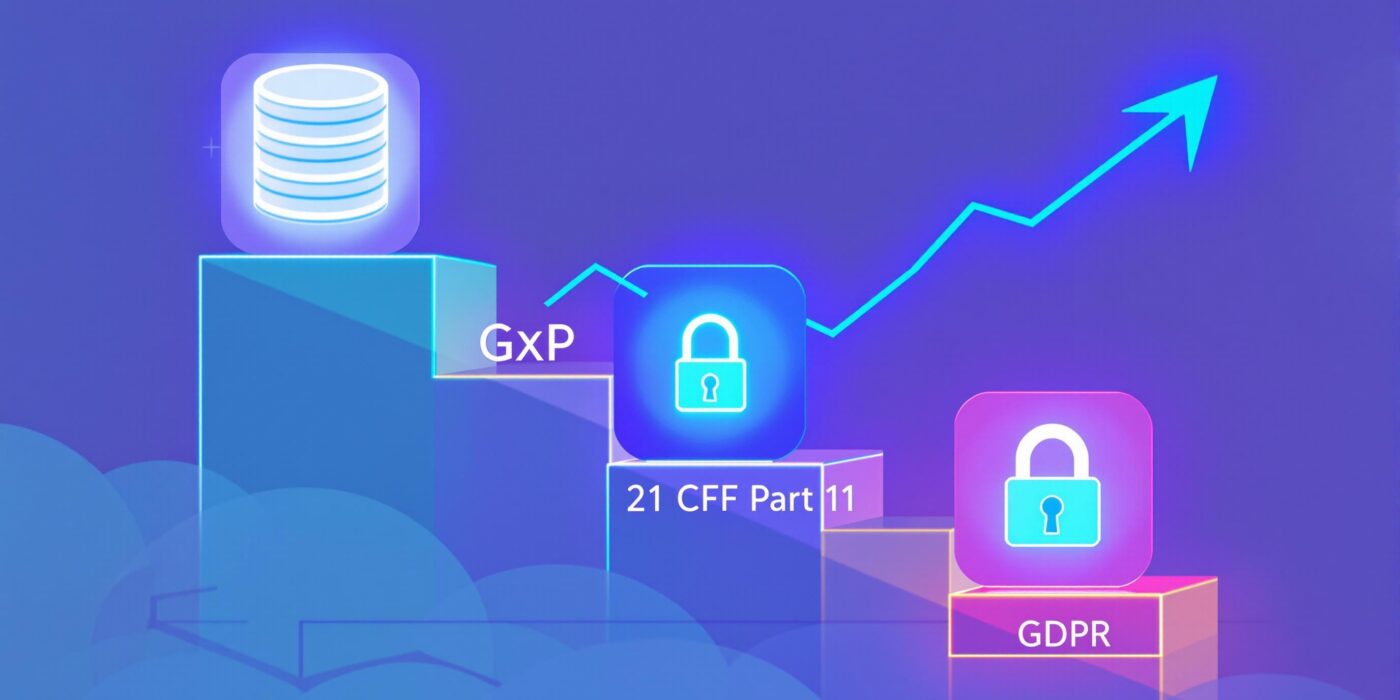For life science executives, the alphabet soup of regulatory compliance – GxP, 21 CFR Part 11, GDPR – can feel overwhelming. These aren’t just abstract legal requirements; they are fundamental frameworks that dictate how your organization handles critical data, validates systems, and protects patient privacy across the entire research-to-commercialization journey. Non-compliance can lead to severe penalties, operational halts, and irreparable damage to your reputation and investor confidence.
Decoding Key Compliance Frameworks
Let’s break down why these regulations are paramount for your life science firm:
- GxP (Good Practice Regulations):
- What it is: A broad term encompassing Good Manufacturing Practices (GMP), Good Clinical Practices (GCP), Good Laboratory Practices (GLP), etc. GxP ensures that products are consistently produced and controlled according to quality standards.
- Cybersecurity Relevance: GxP demands data integrity, system validation, and robust controls over electronic records and systems used in any GxP-regulated activity. This means your IT infrastructure directly impacts product quality and safety.
- 21 CFR Part 11 (Electronic Records; Electronic Signatures):
- What it is: An FDA regulation establishing criteria under which electronic records and electronic signatures are considered trustworthy, reliable, and equivalent to paper records and handwritten signatures.
- Cybersecurity Relevance: Part 11 mandates technical controls like secure, computer-generated audit trails, robust system security to prevent unauthorized access, device checks, and operational system checks. It directly addresses the security and integrity of your electronic data.
- GDPR (General Data Protection Regulation):
- What it is: A comprehensive data privacy and security law in the European Union that applies to any organization handling the personal data of EU residents, regardless of the organization’s location.
- Cybersecurity Relevance: GDPR requires robust technical and organizational measures to protect personal data from unauthorized access, loss, or destruction. This includes data encryption, pseudonymization, regular security assessments, and a clear incident response plan. It introduces significant fines for breaches and non-compliance.
- HIPAA (Health Information Portability and Accountability Act – U.S.):
- What it is: Primarily in the U.S., HIPAA protects sensitive patient health information (PHI) from being disclosed without the patient’s consent or knowledge.
- Cybersecurity Relevance: HIPAA mandates specific security safeguards for electronic PHI, including administrative, physical, and technical safeguards, such as access controls, audit controls, integrity controls, and transmission security.
Ensuring Compliance Through Cybersecurity
Achieving and maintaining compliance with these intricate regulations is inextricably linked to your cybersecurity posture. Here’s how robust security measures enable compliance:
- Data Integrity: Strong cybersecurity ensures data remains unaltered and accurate — a core tenet of GxP and 21 CFR Part 11.
- Audit Trails: Secure systems generate tamper-proof audit trails, essential for demonstrating compliance and accountability.
- Access Controls: Limiting access to authorized personnel and systems protects sensitive data and prevents unauthorized modifications — a requirement across all frameworks.
- Incident Response: A well-defined cybersecurity incident response plan allows for rapid detection and containment of breaches, mitigating the impact on data integrity and demonstrating due diligence under GDPR and HIPAA.
- System Validation: Cybersecurity controls are an integral part of validating GxP-relevant systems, ensuring they operate as intended and maintain data security.
centrexIT: Your Guide to Regulatory Clarity At centrexIT, our commitment to “take CARE of our people” means helping life science executives confidently navigate the complex web of regulations. We provide the clarity on compliance exposure and proactive security readiness needed to ensure your operations are not just secure, but also fully compliant.
Ready to simplify your compliance efforts and strengthen your cybersecurity posture?
Our “Regulatory Audit Readiness Checklist for Life Science Firms,” provides a practical, actionable framework designed to help you prepare for critical regulatory audits, focusing on the IT security aspects, data integrity, and system validation essential for compliance.
Regulatory Audit Readiness Checklist for Life Science Firms
Please fill out the following form to download the checklist now!
